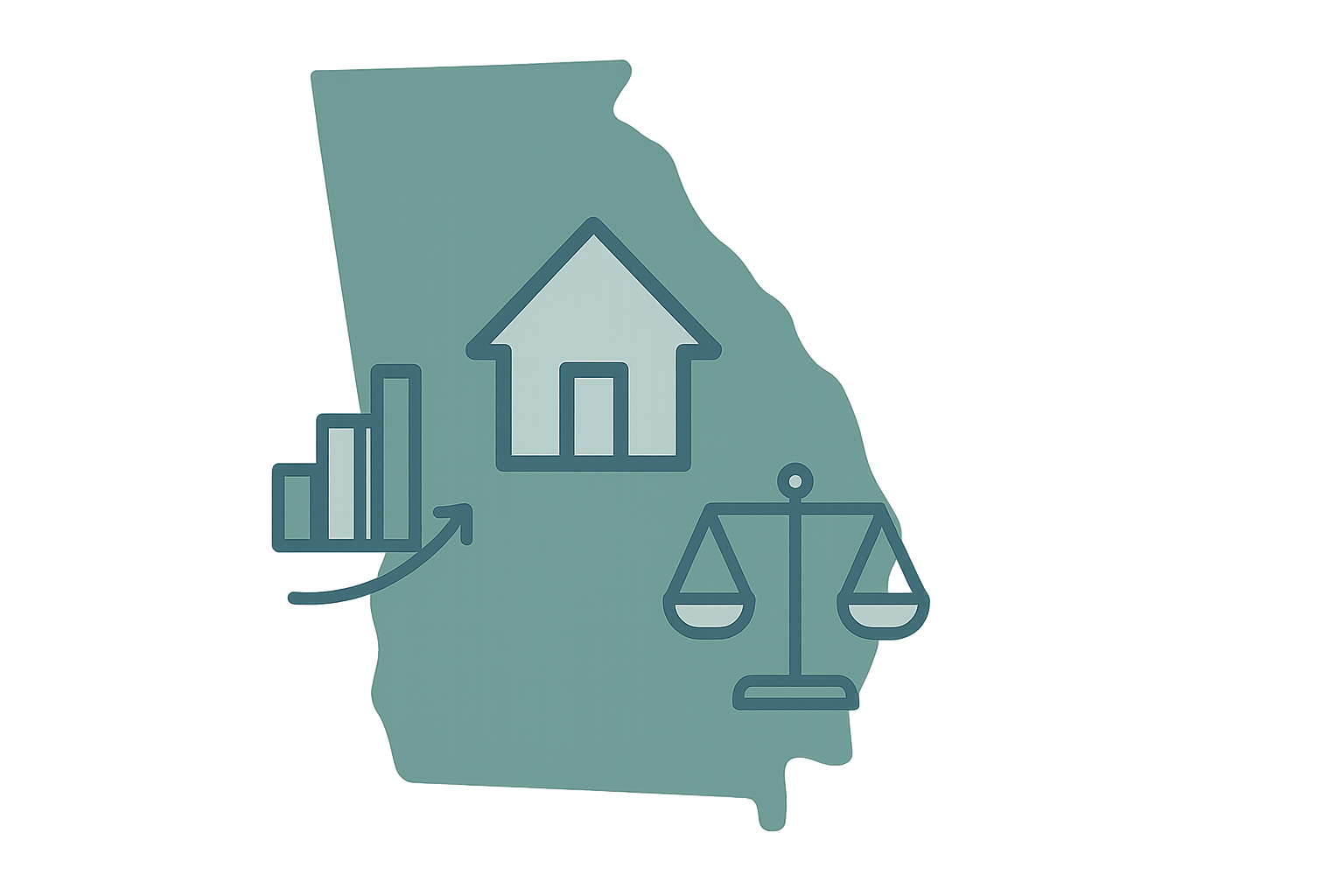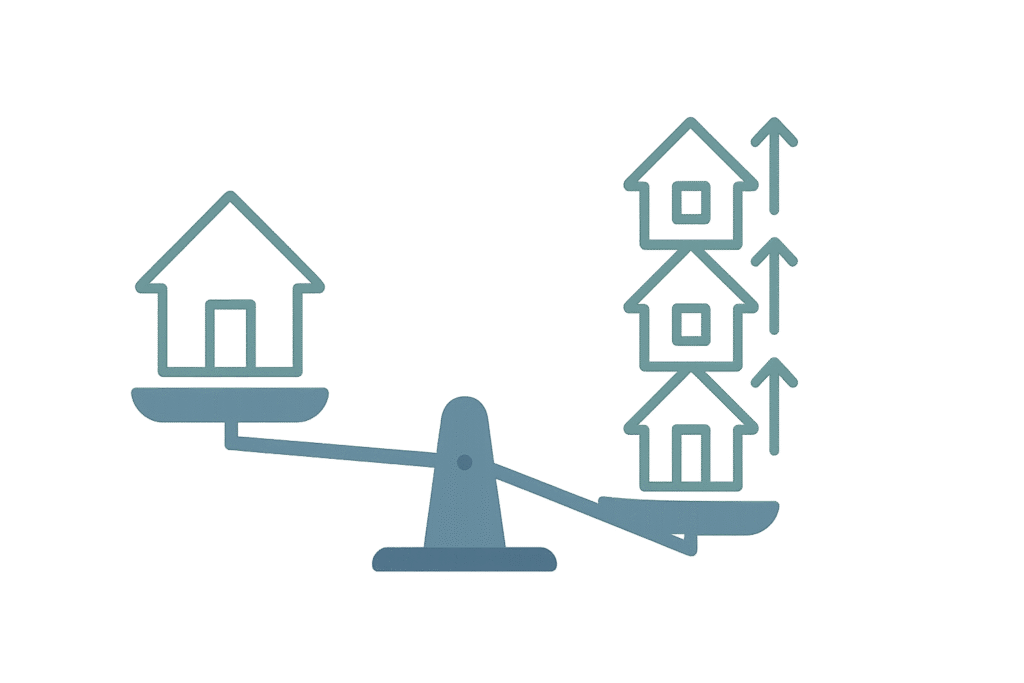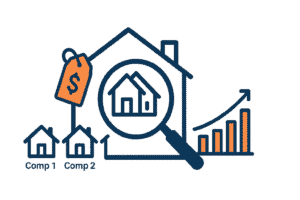Georgia Housing Trends 2025: Year-End Inventory Outlook
The Evolving Landscape: Georgia Real Estate Inventory Trends 2025 After two decades handling thousands of real estate closings across Georgia, I’ve witnessed major market cycles….

The Evolving Landscape: Georgia Real Estate Inventory Trends 2025
After two decades handling thousands of real estate closings across Georgia, I’ve witnessed major market cycles. From the housing bubble of 2006 to the pandemic-driven frenzy of 2021, each phase provided new lessons. Today, the Georgia housing market shows patterns that signal a fundamental shift in our local housing landscape.
The market is finally taking a breath after recent years of intense competition. We are moving from a hyper-competitive seller’s market to a more balanced market in 2025. This transition represents one of the most significant shifts I have seen since starting my practice.
The balance of market power is changing between buyers and sellers in a way that benefits both sides. Prospective buyers are finding chances that seemed impossible just one year ago. Sellers, on the flip side, find that realistic pricing and good preparation still bring excellent returns. The days of listing a property and receiving many over-asking offers are becoming less common.
- The number of homes for sale is increasing.
- The days of properties selling in a flash are being replaced by a healthier dynamic where negotiation and strategy matter again.
Key Market Trends Reshaping Georgia Real Estate
Two main factors are changing Georgia’s real estate scene: home price growth is slowing down, and inventory levels are improving. After years of major appreciation that left many would-be buyers on the sidelines, we are seeing a steady growth that is more realistic. Home prices continue to climb, but at a pace that allows incomes to catch up somewhat.
Home Price Moderation and National Comparison
Georgia’s median home price reached $365,000 year-to-date through October 2025, a 0–3% increase from last year. This median sale price moderates the massive annual jumps we saw from 2020 to 2022. The current growth rate feels sustainable, helping to close the affordability gap slowly.
When comparing Georgia’s latest data to the national average, we are performing very well. While the national median list price growth has slowed to about 3–4% annually, Georgia keeps a slightly higher path at 5–6%. This reflects the state’s continued economic health.
- Georgia’s current median home price is $385,000.
- The appreciation rate is 5.2% from last year, a moderate pace.
- Since 2019, Georgia home prices have increased roughly 45% cumulatively.
- This positions Georgia well for long-term stability without the extreme levels seen in some other markets.
A Closer Look at Georgia Real Estate Inventory Trends 2025
Inventory tells the most important story of any housing market, and Georgia’s narrative is finally changing for the better, with available listings restocking across the state, according to recent MLS reports.
The Critical Role of Available Inventory and Housing Supply
The year-over-year increase in housing inventory is a breath of fresh air for Georgia’s market. We are experiencing a 39% increase in available inventory compared to last year. However, context is vital here.
Even with this improvement, we are still operating below pre-pandemic inventory norms. This contributes to a relatively more balanced environment.
- A more balanced environment means buyers have choices again.
- Instead of competing with fifteen other offers, they might see three or four.
- This shift allows for home inspections, appraisal clauses, and actual negotiation—elements that nearly vanished during the pandemic years.
On-Market Inventory vs. Pre-Pandemic Inventory Norms
To put our current situation in perspective, today’s on-market inventory sits at about 65% of what we considered normal in 2019. While we haven’t fully recovered, the direction is encouraging. I remember closings in 2019 where buyers had six weeks to consider their options—we are not there yet, but we are moving in that direction.
The improvement is very different depending on price tiers.
- Entry-level number of homes under $300,000 still see tight inventory.
- Properties above $500,000 show considerably more availability. This disparity affects different buyer segments uniquely.

New Active Home Listings and Construction
Homeowners are finally moving past the “rate lock” phenomenon that kept properties off the market. Many sellers who refinanced at historic lows hesitated to list, not wanting to trade their 2.5% mortgage for today’s rates. However, life events—job relocations, family changes, downsizing needs—are making more owners list their properties despite the rate differential.
New construction is playing a key role in easing tight inventory conditions. Builders in Georgia added about 35,000 new homes in 2024, with similar projections for 2025. These new active home listings provide buyers with options that do not require bidding wars. I have closed many new construction deals recently where agreements included buyer assistance with closing costs and upgrades, reflecting improved market options.
Local Level Inventory Disparities
Metro Atlanta continues to dominate Georgia’s real estate conversation, but the Atlanta MSA is only part of the story. While Atlanta proper still maintains relatively tight inventory with home sales averaging 25 days on market, suburban areas like Cherokee and Forsyth counties show more available inventory with 35–40 day averages.
Secondary markets deserve attention too. Cities like Columbus, Augusta, and Savannah have their own unique dynamics. Savannah, buoyed by port expansion and tourism, maintains tighter inventory than Augusta, where military base realignments create periodic supply surges.
Inventory by Property Type
Single-family homes remain the tightest segment, particularly in established neighborhoods with good schools. Condominiums and townhomes show better availability, especially in urban cores. I recently closed a condo purchase where the buyer benefited from five similar units available in the market, a luxury unavailable in the single-family segment.
The disparity extends to price per square foot as well. Single-family homes command premium pricing while condos offer relative value. Investment properties, particularly small multifamily units, remain scarce as investor interest stays strong despite higher rates.
Home Price & Value Trends: The State of Affordability
Twenty years of closings have taught me that home prices tell stories beyond simple appreciation. Today’s price trends reflect a market finding its equilibrium after an unprecedented run-up.
Analyzing Median Home Price and Home Price Growth
The latest data shows Georgia’s median home price reaching $385,000 in early 2025, representing a 5.2% increase from last year. This median sale price marks a significant milestone but also a moderation from the 15–20% annual jumps we saw during 2020–2022. The current growth rate feels sustainable, allowing local incomes to slowly close the affordability gap.
Looking at recent years provides crucial context. Since 2019, Georgia home prices have increased roughly 45% cumulatively. This steady growth pattern positions Georgia favorably for long-term stability.
Price Adjustments and Seller Behavior
The frequency of price cuts has tripled compared to 2022, with approximately 30% of listings experiencing price reductions before selling. This shift represents a return to normal market dynamics where pricing strategy matters. Overpricing now carries consequences: extended market time and eventual reductions that can stigmatize a listing.
The sale-to-list price ratio currently sits at 97.8%, indicating sellers are achieving close to asking price but rarely exceeding it. This metric suggests price flexibility has returned, benefiting prepared buyers who negotiate effectively.
A Deeper Dive into Regional Home Values
Metro Atlanta: Continued, Yet More Modest, Steady Growth in Median Home Values
Metro Atlanta’s median home values reached $425,000, maintaining steady growth despite higher mortgage rates. The market shows resilience due to continued job growth and corporate relocations. However, the appreciation rate has cooled to about 4% annually, a healthy adjustment from unsustainable peaks.
Different Atlanta neighborhoods show varied performance. Established areas like Buckhead and Virginia-Highland maintain strong values with minimal price flexibility. Meanwhile, emerging neighborhoods in South Atlanta offer better negotiating opportunities while still showing appreciation potential.
Suburban Areas: Where a Higher Number of Homes Are Providing Better Value
Suburban areas are revealing the most interesting dynamics in recent closings. Counties like Coweta, Paulding, and Carroll offer median home values around $315,000, substantially below metro Atlanta levels. The number of homes available in these areas has increased 55% year-over-year, creating genuine buyer opportunities.
These suburban areas attract families seeking space and affordability. School quality varies more than in established metro districts, requiring careful research. However, the value proposition is compelling, especially for remote workers no longer tied to daily commutes.
| Region | Median Home Value | Inventory YoY Change | Key Insight |
|---|---|---|---|
| Statewide (GA) | $375,000 | +15% | Balanced growth, steady demand |
| Metro Atlanta | $425,000 | +10% | Resilient but cooling appreciation |
| Suburbs (e.g., Coweta) | $315,000 | +55% | High availability for families |
Analyzing Home Values by Zip Code
Zip code analysis reveals micro-markets within broader trends. The 30319 zip code (Brookhaven/Buckhead) maintains a median home value exceeding $675,000 with minimal inventory. Contrast this with 30344 (East Point), which has a median value of $233,000 but shows a -10.8% annual change as the area adjusts amid broader softening.
Understanding these localized patterns helps buyers identify opportunity zones. I recently facilitated the closing for clients in a transitioning zip code, where the property was acquired 15% below comparable homes just two miles away. Such disparities will not last forever, making local knowledge invaluable.
The Influence of Economic Indicators and Higher Mortgage Rates
Economic factors create the backdrop against which all real estate transactions occur. My closing table conversations increasingly center on rates and their impact on purchasing power.
Interest Rates and Buyer’s Market Power
Current average 30-year fixed rates hover around 6.00%. Expert predictions for the second half of 2025 suggest potential modest decreases to 5.8–6.2%. While these rates seem high compared to recent history, they align with long-term historical norms.
Higher mortgage rates continue reshaping demand by reducing purchasing power approximately 20% compared to 2021. This mathematical reality forces priority adjustments—perhaps considering townhomes instead of single-family homes or exploring emerging neighborhoods.
Economic Drivers for the Georgia Housing Market
Georgia’s steady job market underpins our housing stability. With low unemployment and major employers expanding operations, job security supports housing demand. The state’s population growth adds roughly 100,000 residents annually, creating sustained housing needs.
Key economic indicators paint an encouraging picture. GDP growth, wage increases, and business investment all trend positively. The Port of Savannah’s expansion and Atlanta’s emergence as a tech hub diversify our economic base. This economic diversity provides resilience against sector-specific downturns.
Market Conditions: Who Has the Power?
Georgia is transitioning toward a more balanced environment rather than a pure buyer’s market. Neither buyers nor sellers hold overwhelming advantages currently. Smart buyers who act decisively find opportunities, while well-prepared sellers still achieve favorable outcomes.
The flip side for sellers involves accepting market realities. Properties need proper preparation, strategic pricing, and sometimes patience. The days of minimal effort yielding maximum returns have passed. However, sellers willing to work with market conditions rather than against them still prosper.
Spotlight on Sales Volume and Activity
Transaction volume often predicts future market directions. Current sales patterns suggest stabilization rather than dramatic shifts either direction.
Total Sales and Closed Volume
Total sales volume stabilized with +2–3% growth compared to previous years… Closed volume in 2025 projects around 100,000 transactions statewide. The year-over-year comparison looks dramatic, but placing current volume in historical context shows we are returning to sustainable levels. Closed volume in 2025 projects around 95,000 transactions statewide.
Affordability challenges explain much of the volume decline. First-time buyers struggle most, often priced out despite improved inventory. However, move-up buyers with existing equity maintain market activity.
Key Buyer Segments
Out-of-state buyers continue influencing Georgia’s market, though their impact has moderated. Remote work flexibility allows professionals from higher-cost states to relocate here, bringing strong purchasing power. Young professionals represent another crucial segment, though they face unique challenges. These buyers often start with condos or townhomes, building equity for future moves.
The Real Estate Investor Interest in Georgia’s Market
Real estate investor activity has cooled but remains significant. Rising rates increased carrying costs while rent growth moderated, compressing returns. However, seasoned investors with cash or alternative financing continue acquiring properties, particularly in emerging neighborhoods showing gentrification signs.
Small investors—those owning 1–4 properties—show more caution than institutional buyers. Large investment firms continue acquiring build-to-rent communities and multifamily complexes, viewing Georgia’s population growth as ensuring long-term demand.
Beyond Homeownership: The 2025 Georgia Rental Market
The rental market deserves attention as it affects overall housing dynamics and provides investment context.
Status of the Rental Market
Rental market trends show moderation after years of explosive growth. Average rents increased 3.5% annually, down from double-digit increases during 2021–2022. Rental vacancy rates are estimated at 7.5–8.0%, up from pandemic lows of 4.5%, giving tenants more negotiating power.
Rising prices in home sales create continued pressure on rental rates as would-be buyers remain renters longer. This extended timeline maintains rental demand despite increased supply from new apartment construction.
Investment Opportunities
Investment opportunities exist for those understanding market nuances. Small multifamily properties in transitioning neighborhoods offer potential, though careful analysis is mandatory. The days of buying anything and watching values soar have ended.
Student housing near Georgia’s universities provides steady returns given enrollment growth. Medical district apartments also show promise as healthcare employment expands. These niche markets require specific knowledge but offer insulation from broader market fluctuations.
The Bottom Line: Georgia Housing Market Predictions 2025
Based on two decades of hands-on experience and the most recent market insights, Georgia’s housing landscape promises steady progress rather than dramatic highs. This welcome shift fosters fairer, more predictable closings for buyers, sellers, and investors alike.
Expert Consensus and Detailed Market Insights
Real estate professionals across Georgia echo similar themes. The consensus among Georgia MLS membership suggests continued modest increase of 3–5% annually through 2025. National Association of Realtors economists project Georgia outperforming national figures due to economic fundamentals.
The chief economist for a major Atlanta brokerage recently shared detailed market insights suggesting inventory will continue improving but remain below historical norms through 2025. Price growth should moderate further, potentially dropping to 2–3% by year-end. These predictions assume no major economic shocks or dramatic Federal Reserve policy changes.
Bridging to 2026: Emerging Signals
As Georgia’s market stabilizes in late 2025, forecasts indicate sustained moderation into the new year, providing strategic clarity for informed participants. Housing economists project statewide price growth of 2–3% through 2026, a controlled pace that builds on current resilience while addressing affordability.
Inventory improvements will persist, with rising active listings enhancing balance and options, particularly in Metro Atlanta suburbs and entry-level tiers, without risking oversupply.
This equilibrium favors proactive action: Investors and relocators should target transitional areas for outsized appreciation potential in Q1 2026. Pre-approvals, title reviews, and local assessments position transactions for optimal outcomes amid easing rates and steady demand.
Final Actionable Advice on Georgia Real Estate Inventory Trends 2025
Advice for Prospective Buyers
Focus on preparation over timing. Get pre-approved, understand your true budget, including maintenance costs, and identify priority neighborhoods. Work with experienced real estate professionals, complemented by legal counsel, who understand negotiation in balanced market conditions. Consider slightly longer search timeframes, but do not wait for perfect conditions that may never arrive.
Advice for Sellers
Price strategically from day one. Invest in pre-listing preparations, including repairs, staging, and professional photography. Price reductions after extended market time rarely recover initial momentum. Understanding your competition through comparative market analysis prevents costly pricing mistakes. Work with agents who provide honest feedback, ensuring alignment with legal requirements, rather than inflated expectations.
The Georgia housing market favors home buyers more than it has in previous years, but it is still competitive. The market in 2025 rewards informed, prepared participants while challenging those expecting easy gains. Whether buying, selling, or investing, success requires understanding current realities rather than past patterns. The market has matured, and so must our approach to navigating it.





